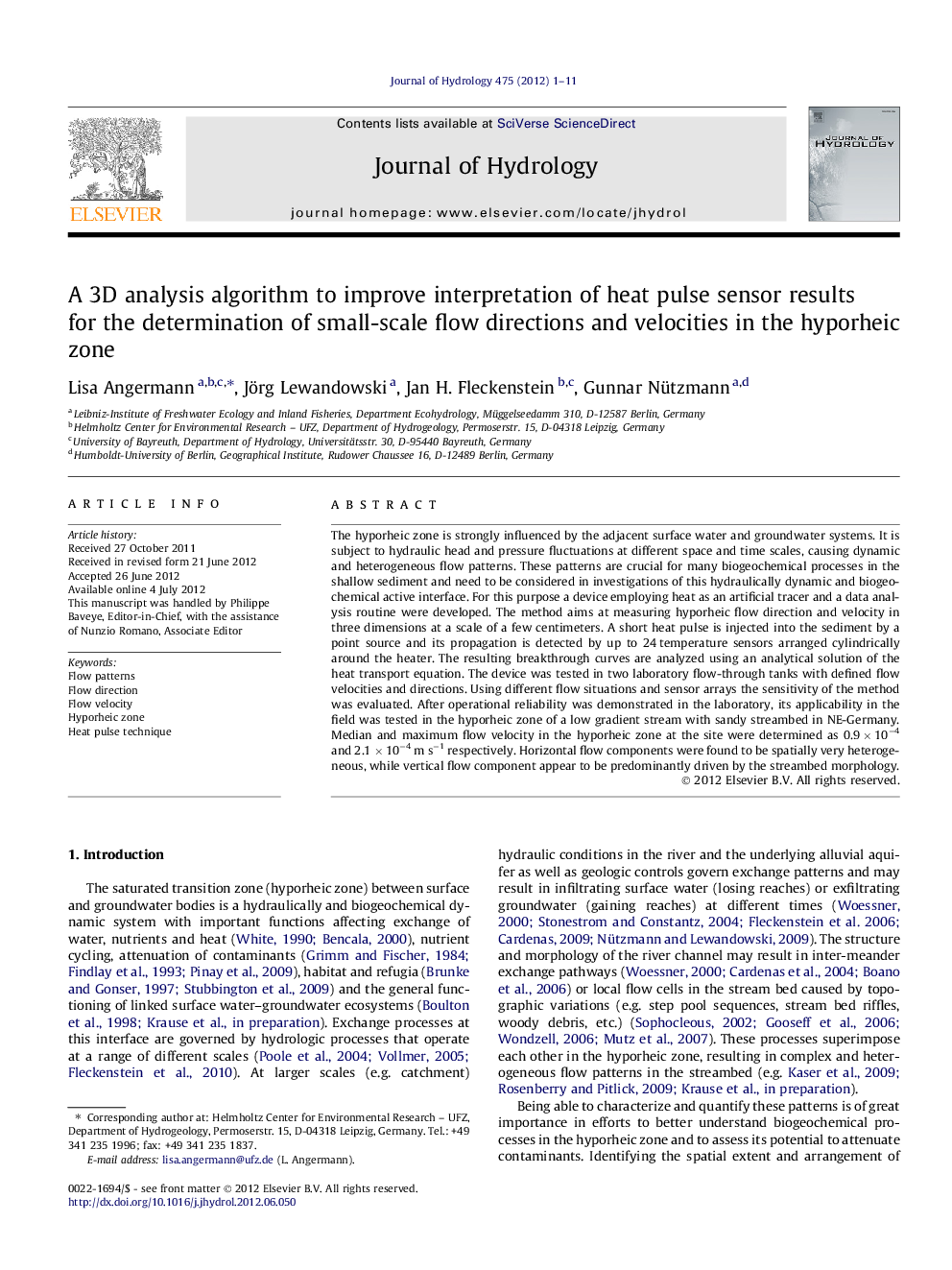| کد مقاله | کد نشریه | سال انتشار | مقاله انگلیسی | نسخه تمام متن |
|---|---|---|---|---|
| 4576640 | 1629973 | 2012 | 11 صفحه PDF | دانلود رایگان |

The hyporheic zone is strongly influenced by the adjacent surface water and groundwater systems. It is subject to hydraulic head and pressure fluctuations at different space and time scales, causing dynamic and heterogeneous flow patterns. These patterns are crucial for many biogeochemical processes in the shallow sediment and need to be considered in investigations of this hydraulically dynamic and biogeochemical active interface. For this purpose a device employing heat as an artificial tracer and a data analysis routine were developed. The method aims at measuring hyporheic flow direction and velocity in three dimensions at a scale of a few centimeters. A short heat pulse is injected into the sediment by a point source and its propagation is detected by up to 24 temperature sensors arranged cylindrically around the heater. The resulting breakthrough curves are analyzed using an analytical solution of the heat transport equation. The device was tested in two laboratory flow-through tanks with defined flow velocities and directions. Using different flow situations and sensor arrays the sensitivity of the method was evaluated. After operational reliability was demonstrated in the laboratory, its applicability in the field was tested in the hyporheic zone of a low gradient stream with sandy streambed in NE-Germany. Median and maximum flow velocity in the hyporheic zone at the site were determined as 0.9 × 10−4 and 2.1 × 10−4 m s−1 respectively. Horizontal flow components were found to be spatially very heterogeneous, while vertical flow component appear to be predominantly driven by the streambed morphology.
► We developed a method to determine flow direction and velocity in the hyporheic zone.
► The method is based on a heat pulse technique with analytical data analysis algorithm.
► Error-proneness and accuracy of the method were assessed in the lab and in situ.
► The first field application gives insight in hyporheic flow patterns of a lowland river.
Journal: Journal of Hydrology - Volume 475, 19 December 2012, Pages 1–11